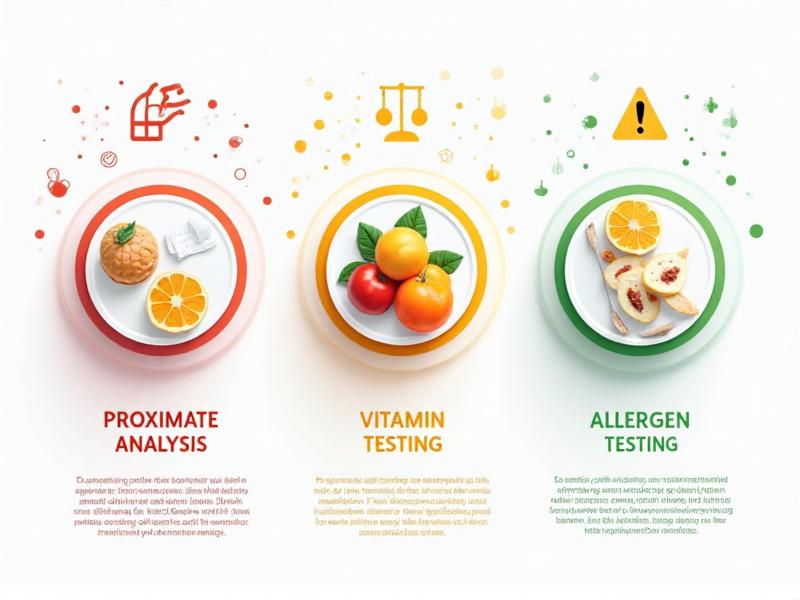Nutritional Analysis Lab Testing Costs
Understanding Nutritional Analysis Lab Testing
Nutritional analysis lab testing is a critical process for determining the nutritional content of food products. This testing is essential for food manufacturers, dietitians, and consumers who need accurate information about the nutrients in their food. The process involves various scientific methods to measure macronutrients like proteins, fats, and carbohydrates, as well as micronutrients such as vitamins and minerals. Understanding the basics of nutritional analysis lab testing helps in appreciating the complexity and importance of the services provided by these labs.

Factors Influencing Nutritional Analysis Lab Testing Costs
Several factors influence the cost of nutritional analysis lab testing. The type of analysis required, such as basic macronutrient profiling or detailed micronutrient analysis, plays a significant role. The complexity of the food product, including the number of ingredients and the need for specialized testing methods, also affects the price. Additionally, the turnaround time, the reputation of the lab, and the geographical location can impact the overall cost. Understanding these factors can help in budgeting and selecting the right lab for specific needs.

Types of Nutritional Analysis Tests and Their Costs
There are various types of nutritional analysis tests, each with its own cost structure. Basic tests, such as proximate analysis, which measures moisture, protein, fat, and ash content, are generally less expensive. More specialized tests, like vitamin and mineral analysis or allergen testing, can be more costly due to the advanced techniques and equipment required. Understanding the different types of tests and their associated costs can help in making informed decisions about which tests are necessary for specific purposes.

Comparing Costs Across Different Labs
The cost of nutritional analysis lab testing can vary significantly between different labs. Factors such as the lab's accreditation, the expertise of its staff, and the range of services offered can influence pricing. It's important to compare costs across multiple labs to find the best value for money. However, it's also crucial to consider the quality and reliability of the results, as cheaper options may not always provide the most accurate or comprehensive data. Comparing costs and services can help in selecting a lab that meets both budgetary and quality requirements.
The Role of Accreditation in Lab Testing Costs
Accreditation plays a significant role in the cost of nutritional analysis lab testing. Accredited labs adhere to strict standards and undergo regular audits to ensure the accuracy and reliability of their results. This level of quality assurance often comes at a higher cost. However, the benefits of using an accredited lab, such as increased confidence in the results and compliance with regulatory requirements, can outweigh the additional expense. Understanding the role of accreditation can help in justifying the higher costs associated with accredited labs.
How to Reduce Costs Without Compromising Quality
There are several strategies to reduce the costs of nutritional analysis lab testing without compromising on quality. One approach is to prioritize the most critical tests and eliminate unnecessary ones. Another strategy is to negotiate with labs for bulk testing discounts or long-term contracts. Additionally, using in-house testing capabilities or partnering with local universities can provide cost-effective alternatives. Implementing these strategies can help in managing costs while still obtaining accurate and reliable nutritional data.
The Impact of Technological Advancements on Lab Testing Costs
Technological advancements have significantly impacted the costs of nutritional analysis lab testing. Innovations in testing equipment and methodologies have led to faster, more accurate, and more cost-effective analyses. Automation and digitalization have also reduced labor costs and increased efficiency. However, the initial investment in advanced technology can be high, and labs may pass these costs onto clients. Understanding the impact of technological advancements can help in anticipating future trends and making informed decisions about lab testing investments.
Case Studies: Real-World Examples of Lab Testing Costs
Examining real-world case studies can provide valuable insights into the costs of nutritional analysis lab testing. For example, a small food manufacturer may spend a certain amount on basic testing, while a large corporation may invest heavily in comprehensive analysis. Case studies can also highlight the cost-benefit analysis of different testing strategies and the impact of cost-saving measures. By analyzing these examples, businesses can better understand the financial implications of nutritional analysis and make more informed decisions.
Future Trends in Nutritional Analysis Lab Testing Costs
The future of nutritional analysis lab testing costs is likely to be influenced by several trends. Increased demand for personalized nutrition and food transparency may drive up the need for more detailed and frequent testing. Advances in technology and automation could continue to reduce costs, while regulatory changes may introduce new requirements that impact pricing. Staying informed about these trends can help businesses and consumers anticipate changes in the cost landscape and adapt their strategies accordingly.







